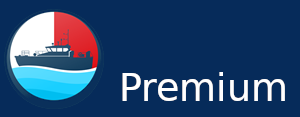HIGH-PERFORMANCE TEAMS IN PILOTAGE
Pilotage is an essential service, it requires high value-added technical expertise, constant training, and teamwork.
Under the management of a high-performance team, pilotage services' safety, efficiency and productivity significantly contribute to harmonizing the interests of maritime trade and the protection of the sensitive environment of ports.
Special missions require skilled and well-trained professionals to perform them.
A high-performance team preparation invests time and practice with a methodology to reach a level of excellence compatible with maritime trade demands.
TRAINING
According to many training experts, including Malcom Gladwell, from his book Outliers: Story of Success, 10.000 hours is the point in which a standard professional acquires the qualities necessary to perform any work with master skill. Let's assume that marine pilots need approximately 10,000 manoeuvres (10K) to reach equivalent level. After reaching this point, the professional has adequate knowledge to manage new situations learned with the competence taught by training.
HOW TO CONSTRUCT AN ACCIDENT (THE FLEXIBLE METHOD)
Some professionals develop their own styles and apply them with questionable flexibilities as time passes.
The accidents result from styles that come from the professional's comfort zone.
This type of attitude leads some of these professionals to continue the path of repeating their flexible methodology, increasing the margin of error, and reducing the possibility for efficient risk management.
Playing as a professional in the comfort zone is simpler.
The flexible methodology does not consider the stumbles and warnings of near missing. It does not address essential details in time to avoid the assembling of a future accident.
Lessons learned and protocols are partially assimilated more by fright than by a rigid mandatory process.
The styles that do not adopt the ballast of norms/resolutions impede the essential training necessary for applying immediate actions in the event of an error chain.
The continuation of training outside the proper methods results that, even in the 10K+ condition, some professionals cannot manage a contingency situation properly.
Have they been trained exhaustively to react in time to stop it?
Training skills to apply a standard operational procedure is impossible without proper methodology and methodical training, including contingency in adequate time.
SAFETY VALUES
In the case of marine pilots, the basis that maintains the level of training necessary to perform the manoeuvres safely is the continuous repetition of the technical methodology recommended in norms and resolutions.
The dimensions of the vessels are increasing. The effects of the current, wind, shallow water and others are considerable during their passage along the channels until the berth.
Many TCPAs and CPAs requiring precise risk management are floating around from PBP until the berth and vice versa.
The IMO Resolution A.960 (23) must be entirely followed and practiced by professionals who manage risks so that its content can have the effects foreseen in its adoption. It is the master guide for shiphandlers.
Marine pilot refresher courses should prioritize checklists and standard operating procedures.
They are essential tools for risk management.
To add safety value to the process, the ship handling specialists need the proper training and follow-up over time to help them reach the 10K+ phase with the competence that congested maritime port traffic expects from them.
One of the strengths of high-performance teams is training focused on the skills needed to perform the job safely and quickly.
ACCIDENTS WITH EXPERIENCIED MARITIME PILOTS (10K+ PILOTS)
As an instructor of refresher courses for pilots, I read many analyses of accidents where the captain and pilot are professionals of more than 10,000 manoeuvres experience (10K+).
The more we delve into the analysis of accidents, the more we find that we can avoid a significant percentage of these just by applying the simple tools recommended in the IMO Resolution A.960 (23).
Considering my restrict analysis of accidents involving 10K+ professionals, the absence of a checklist and a standard operating procedure stand out among the contributing factors observed.
THE 10K+ SHIPHANDLERS DOING THEIR BEST
What value do 10K+ shiphandlers add to the safety of the manoeuvres?
After all, they are white-haired professionals, and the captains trust them. Their fellow 10K- shiphandlers see them as role models.
We need to train, adjust, create, share, and navigate with the safety of those who know that the game of manoeuvres requires competence to finish successfully.
Manoeuvre after manoeuvre, 10K+ marine pilots should take the route that turns them into old and experienced pilots.
Otherwise, as time goes on, they will only be old pilots.

